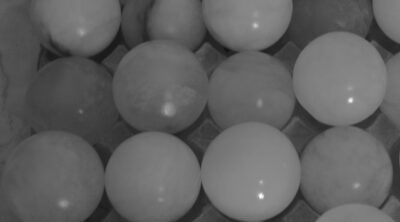Alabaster Eco-sustainability
Alabaster: a sustainable natural wonder to discover.

Alabaster is a stone of extraordinary beauty that is widely used to create sculptures, art objects, and decorative elements. This stone, known since ancient times, is a unique natural material that stands out for its luster and variety of colors. However, in addition to its intrinsic beauty, it is important to also evaluate its sustainability, especially regarding the extraction of the material.
Alabaster is a sedimentary mineral composed mainly of calcite or gypsum. It forms over long periods of time through geological processes involving the deposition of organic materials, marine sediments, and the precipitation of calcium solutions. This unique combination of geological factors contributes to the creation of alabaster, giving it its beauty and characteristic structure.
The sustainability of alabaster extraction depends on various factors, including environmental and social impact. Fortunately, alabaster extraction can be carried out in a sustainable manner if properly managed.
Reduced environmental impact: Alabaster extraction can be done through open-pit mining or underground mines. When managed sustainably, open-pit extraction minimizes environmental impact, allowing for easy site rehabilitation. Moreover, modern extraction methods reduce the amount of waste material produced, promoting greater resource efficiency.
Minimization of social impact: An important aspect of alabaster extraction sustainability relates to its social impact on local communities. Sustainable mining operations strive to ensure good working conditions for workers, adhering to safety standards and promoting fair treatment. Additionally, collaboration with local communities can contribute to the economic and social development of the affected areas.
Value chain enhancement: The sustainability of alabaster extraction extends to the entire production chain. By promoting sustainable practices during processing and finishing of the material, overall environmental impact can be reduced, and finished products can be ethically produced.
Alabaster is a natural stone of extraordinary beauty that can be extracted and processed sustainably. When extraction is carried out according to environmental and social sustainability criteria, it is possible to preserve the local ecosystem and promote the well-being of the involved communities. Furthermore, responsible resource utilization during alabaster processing contributes to reducing overall environmental impact.
For buyers and consumers, it is important to be aware of the origin of the alabaster products they purchase. By giving preference to products from sustainable and certified sources, one can contribute to supporting responsible alabaster industry and promoting environmental conservation.
Alabaster is a natural treasure that can be extracted and processed sustainably, preserving its unique characteristics and contributing to the well-being of the involved communities. Supporting responsible alabaster extraction means appreciating the beauty of nature without compromising its future.


ALABASTER



Alabaster is a translucent or semi-translucent variety of gypsum (hydrated calcium sulfate) with a crystalline structure, renowned for its beauty and versatility in numerous artistic and decorative applications. Here’s a comprehensive description of alabaster, starting from the material itself, extraction, uses, and derived products:
Material: is a variety of gypsum with a chemical composition similar to limestone. Its main characteristic is its translucency or semi-translucency, setting it apart from other similar stones. This translucency results from its microcrystalline structure, allowing light to pass through the stone diffusely.
Extraction: Alabaster is extracted from various parts of the world, including Italy, Spain, Mexico, Egypt, and Persia. The extraction process involves removing the overlying rocks and cutting alabaster blocks from underground or open-pit quarries. These blocks are then transported for further processing.
Uses: has been used for decorative and artistic purposes for thousands of years. Some of its most common uses include:
- Sculptures: Alabaster is an excellent material for sculpture. Its relative softness makes it easily workable, allowing artists to create fine details and gradations in their works.
- Art Objects: Alabaster is often used to create art objects such as vases, candleholders, lamps, and other home decorations.
- Architectural Elements: Throughout history, alabaster has been used to craft columns, decorative panels, stained glass windows, and other architectural embellishments.
- Religious Objects: Many churches and places of worship contain sacred artworks made from alabaster, such as statues, altars, and reliquaries.
- Gemstones: In some cultures, alabaster has been fashioned into gemstones or semi-precious stones for use in jewelry.
- Alabaster Lamps: Alabaster lamps are particularly popular for their soft, warm light that diffuses evenly through the stone.
Derived Products: Alabaster stones yield a variety of items, including:
- Sculptures and Art Objects: These can be unique pieces created by artists or mass-produced for the art and craft market.
- Tiles and Cladding: Alabaster can be cut into thin slabs for covering walls, floors, and other architectural elements.
- Artistic Glass: Alabaster can be used to create stained glass windows, producing a captivating colored light effect.
- Jewelry Components: Precious and semi-precious alabaster gemstones can be used to make items such as rings, earrings, and necklaces.
In summary, is an extraordinary material cherished for its beauty and its artistic and decorative versatility. Its rich history and its ability to diffuse light make it a valuable choice for a wide range of artistic, architectural, and decorative applications worldwide.



